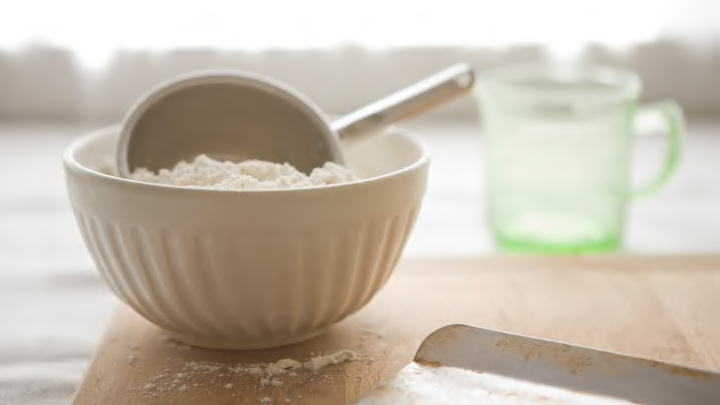Aside from eating delicious meals, baking is known to make people feel good. Donna Pincus, an associate professor of psychological and brain sciences at Boston University, told HuffPost that the habit reduces stress and allows people to express themselves. However, any recipe can quickly go south if the measurements aren’t accurate. That’s why it’s important to know the proper way to measure flour in cups.
How to Measure Flour
Baking expert Rose Levy Beranbaum, the author of several books, including Baking Bible, told Martha Stewart that flour might need to be sifted, or separated, so that it mixes well with the other ingredients. (If so, recipes will tell you when to sift the flour.) Beranbaum says bakers should follow this step after measuring if the word sift comes after the ingredient.
Baked goods seller King Arthur Baking suggests the “fluff, spoon, and sweep” method for measuring flour. If the product has been sitting for a while, fluff the flour to make it more airy. Then, you can use a spoon to scoop the ingredients into a dry measuring cup. Avoid using a liquid measuring cup, which is specially made for wet ingredients like oil and water. The flour should slightly pile over the cup. You don’t want to dunk the measuring cup in the flour bag, as you may put too much in the mixture. It’s best to use a small, light knife to avoid injury. After you’re done spooning, you can sweep: Simply drag the straight edge of a knife over the top of the cup to level off the flour.
Martha Stewart advises not to level the flour by shaking the cup or banging it on a hard surface. Doing this may result in too much flour in your recipe. Adding too much flour to a recipe, whether cookies, cake, or bread, will make the product overly dry and dense.
Read More About Baking:
